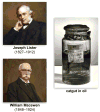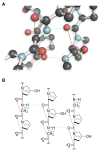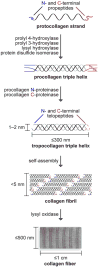Review collagen-based biomaterials for wound healing
- PMID: 24633807
- PMCID: PMC4203321
- DOI: 10.1002/bip.22486
Review collagen-based biomaterials for wound healing
Abstract
With its wide distribution in soft and hard connective tissues, collagen is the most abundant of animal proteins. In vitro, natural collagen can be formed into highly organized, three-dimensional scaffolds that are intrinsically biocompatible, biodegradable, nontoxic upon exogenous application, and endowed with high tensile strength. These attributes make collagen the material of choice for wound healing and tissue engineering applications. In this article, we review the structure and molecular interactions of collagen in vivo; the recent use of natural collagen in sponges, injectables, films and membranes, dressings, and skin grafts; and the on-going development of synthetic collagen mimetic peptides as pylons to anchor cytoactive agents in wound beds.
Keywords: biocompatible; biodegradable; catgut; extracellular matrix; regenerative medicine.
© 2014 Wiley Periodicals, Inc.
Figures





References
Publication types
MeSH terms
Substances
Grants and funding
LinkOut - more resources
Full Text Sources
Other Literature Sources
Medical

